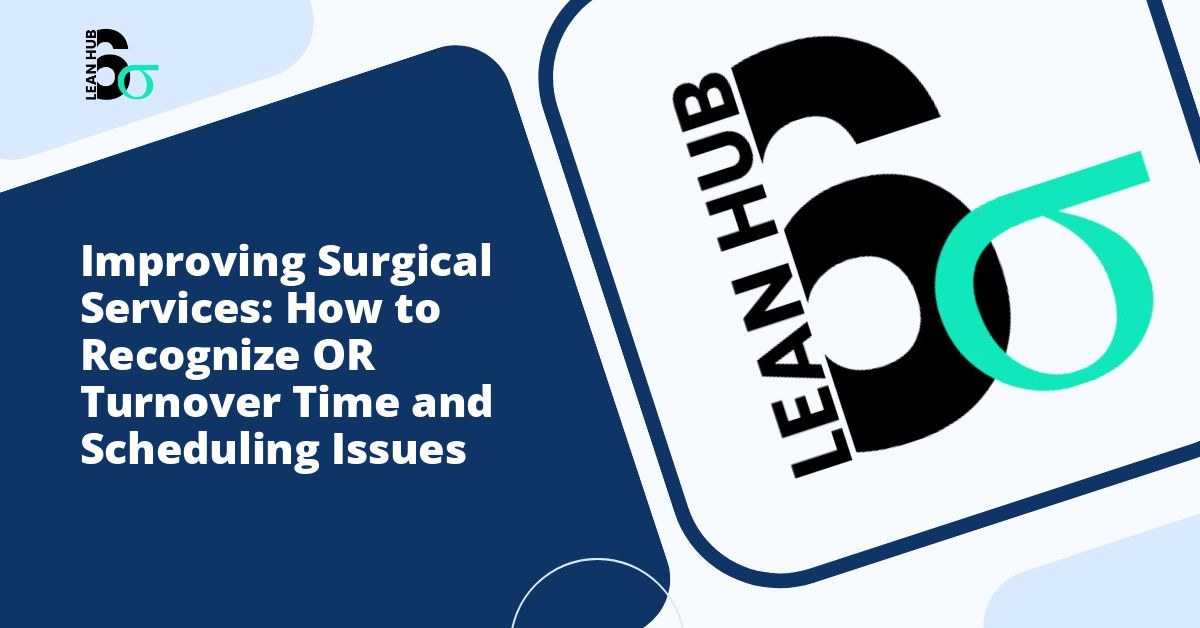Operating room efficiency remains one of the most critical factors affecting hospital performance, patient satisfaction, and healthcare costs. When surgical facilities experience delays and scheduling problems, the ripple effects can impact everything from patient outcomes to staff morale and institutional revenue. Understanding how to identify and address these challenges requires a systematic approach that combines healthcare expertise with proven quality improvement methodologies.
The Critical Importance of OR Efficiency
Operating rooms represent one of the most expensive resources in any healthcare facility. Studies consistently show that surgical suites generate a significant portion of hospital revenue while simultaneously consuming substantial operational resources. When these spaces sit idle between procedures or when scheduling inefficiencies create bottlenecks, healthcare organizations lose both time and money at an alarming rate. You might also enjoy reading about How to Execute the Recognize Phase in Hospitals: A Comprehensive Guide to Reducing Patient Wait Times.
The financial implications extend beyond simple lost revenue. Delayed surgeries can result in extended patient stays, increased risk of complications, and lower patient satisfaction scores. Staff members face burnout when schedules run overtime due to inefficiencies, and surgeons grow frustrated when preventable delays disrupt their carefully planned days. These challenges make OR turnover time and scheduling optimization not just operational concerns but strategic imperatives for modern healthcare institutions. You might also enjoy reading about Problem Recognition in Telemedicine Services: A Lean Six Sigma Approach to Digital Healthcare Delivery.
Understanding OR Turnover Time
Turnover time refers to the period between when one patient leaves the operating room and when the next patient enters. This interval encompasses several distinct activities: cleaning and disinfecting the surgical suite, setting up equipment for the next procedure, preparing necessary instruments and supplies, and ensuring the room meets all safety and sterility requirements. You might also enjoy reading about Creating a Problem Recognition Culture in Your Organization: A Strategic Approach to Continuous Improvement.
Industry benchmarks suggest that optimal turnover times typically range between 20 and 45 minutes, depending on the complexity of procedures and institutional protocols. However, many facilities struggle to meet these targets consistently. Extended turnover times compound throughout the day, transforming what might seem like minor delays into significant scheduling disruptions that affect multiple patients and surgical teams.
Common Scheduling Challenges in Surgical Services
Surgical scheduling presents unique complexities that distinguish it from other healthcare services. Unlike outpatient appointments that follow relatively predictable patterns, operating room schedules must account for numerous variables that can significantly impact timing and resource allocation.
Inaccurate Time Estimates
One of the most prevalent issues involves unrealistic estimates of procedure duration. When surgeons or scheduling staff underestimate how long operations will take, subsequent cases face inevitable delays. These miscalculations often stem from insufficient historical data analysis, failure to account for individual surgeon performance variations, or inadequate consideration of case complexity factors.
Emergency Case Integration
Emergency and urgent cases must be integrated into existing schedules, often displacing planned procedures or extending already full days. While this flexibility remains essential for patient care, facilities without robust systems for accommodating emergencies while minimizing disruption to elective cases face ongoing scheduling chaos.
Resource Availability Issues
Surgical procedures require coordination of multiple resources beyond the operating room itself. Anesthesiologists, specialized nurses, surgical technicians, and equipment must all align perfectly. When any single resource becomes unavailable or delayed, the entire schedule suffers. Equipment sterilization delays, staff shortages, and inadequate instrument availability represent common resource-related scheduling problems.
The Recognize Phase in Process Improvement
Before implementing solutions to OR efficiency problems, healthcare organizations must first accurately identify and understand the root causes of their scheduling and turnover challenges. This critical step aligns with the recognize phase of structured problem-solving methodologies used across industries to improve operational performance.
The recognize phase involves systematically observing current processes, collecting relevant data, and identifying patterns that reveal underlying issues. In the context of surgical services, this means moving beyond anecdotal complaints about delays to develop concrete, data-driven insights about where problems actually occur and what factors contribute to inefficiencies.
Applying Lean Six Sigma to OR Efficiency
Healthcare organizations increasingly turn to lean six sigma methodologies to address operational challenges, including those affecting surgical services. This data-driven approach combines lean manufacturing principles focused on waste elimination with six sigma statistical methods aimed at reducing process variation.
When applied to OR turnover and scheduling issues, lean six sigma provides a structured framework for recognizing problems, analyzing their causes, implementing solutions, and sustaining improvements over time. The methodology helps teams move beyond assumptions and opinions to make decisions based on objective evidence about what actually happens in their operating rooms.
Defining the Problem
Effective problem recognition begins with clear definition. Rather than vaguely stating that “turnover takes too long,” lean six sigma encourages teams to specify exactly what they mean. For example, a properly defined problem might state: “Our facility’s average OR turnover time of 58 minutes exceeds the industry benchmark of 35 minutes by 66%, resulting in an average of two fewer surgical cases per room per day.”
Data Collection Strategies
Recognizing OR efficiency problems requires comprehensive data collection across multiple dimensions. Effective assessment includes tracking actual turnover times for different procedure types, documenting reasons for delays, measuring time spent on various turnover activities, and recording when scheduled cases actually begin compared to planned start times.
Modern electronic health record systems and OR management software can automate much of this data collection, but many facilities still need to implement supplemental tracking methods to capture all relevant information. Time studies, direct observation, and staff input all contribute valuable insights during the recognize phase.
Key Metrics for Recognizing OR Scheduling Issues
Several specific metrics help healthcare organizations recognize when OR scheduling and turnover problems exist and track their severity over time.
- First Case On-Time Starts: The percentage of days when the first surgical case begins at the scheduled time serves as a fundamental indicator of scheduling system effectiveness and preparation efficiency.
- Average Turnover Time: Tracking mean turnover duration by procedure type, time of day, and surgical team reveals patterns and identifies outliers requiring attention.
- Schedule Adherence Rate: This metric measures how closely actual surgical schedules align with planned schedules throughout the day.
- OR Utilization Rate: The percentage of available OR time actually used for surgical procedures indicates whether scheduling issues cause rooms to sit empty.
- Case Cancellation Rate: Frequent last-minute cancellations often signal upstream scheduling problems or resource allocation issues.
- Overtime Frequency: Regular schedule overruns indicate systematic problems with time estimation or turnover efficiency.
Practical Steps for Recognizing Your Facility’s Issues
Healthcare leaders ready to address OR efficiency challenges should begin with these concrete recognition steps:
Assemble a Cross-Functional Team: Include surgeons, anesthesiologists, OR nurses, surgical technicians, environmental services staff, and scheduling personnel. Each perspective contributes unique insights about potential problem areas.
Establish Baseline Measurements: Determine current performance across key metrics before attempting any interventions. This baseline provides the foundation for recognizing specific problems and later measuring improvement.
Conduct Process Mapping: Document every step involved in OR turnover and surgical scheduling. Visual process maps often reveal redundancies, bottlenecks, and unnecessary complexity that contribute to delays.
Perform Direct Observation: Spend time watching actual turnover processes and schedule execution. What happens in practice often differs significantly from documented procedures or assumptions about workflow.
Gather Stakeholder Input: Survey surgical staff, interview scheduling personnel, and create forums for team members to share their experiences and observations about scheduling and turnover challenges.
Moving Forward After Recognition
Accurately recognizing OR turnover and scheduling issues represents the essential first step toward improvement, but recognition alone does not solve problems. Once healthcare organizations clearly understand their specific challenges through systematic assessment and data collection, they can progress to analyzing root causes, designing targeted interventions, and implementing sustainable solutions.
The recognize phase establishes the factual foundation that prevents wasted effort on solving the wrong problems or implementing changes based on incomplete understanding. By investing adequate time and resources in thorough problem recognition, surgical services position themselves for meaningful, lasting improvements in efficiency, patient satisfaction, and financial performance.
Healthcare facilities that approach OR efficiency challenges with disciplined recognition methods, supported by frameworks like lean six sigma, consistently achieve better results than those relying on intuition or implementing generic best practices without understanding their unique circumstances. The path to optimal surgical services begins with seeing clearly what actually happens in your operating rooms today.








